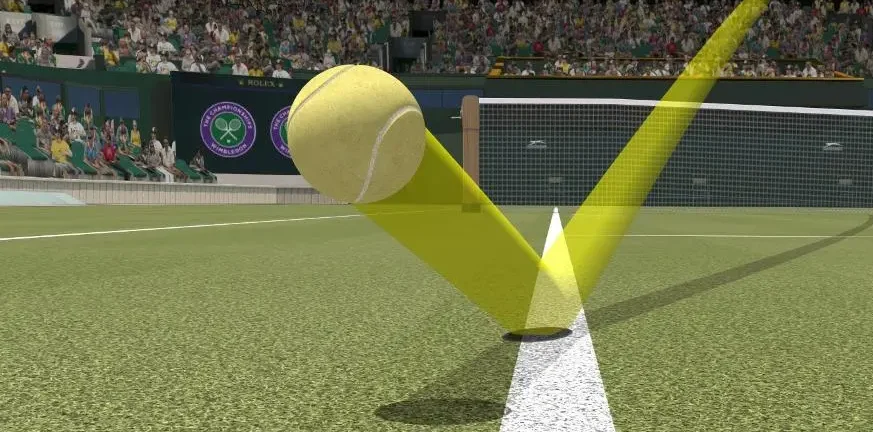The impact of technology on athletics has been profound, revolutionizing the way we play sports. Technological advancements have brought about significant changes in various aspects of sports, from equipment and training methods to officiating and performance analysis.
These advancements have not only enhanced the overall experience for athletes and spectators but have also opened up new possibilities for improving performance and pushing the boundaries of human achievement. As technology continues to evolve, it is clear that the future of athletics will be shaped by the integration of innovative technologies.
Technology plays a crucial role in enhancing athletic performance. Through the use of advanced tracking systems, athletes can monitor their performance in real-time, allowing them to identify areas for improvement and make data-driven decisions. Furthermore, technologies such as motion capture and virtual reality have been utilized to perfect athletic movements and simulate game situations, providing athletes with valuable training opportunities. The increase in technology has also provided athletes with convenient opportunities to elevate their skills, as teams now have access to tools and resources that were previously unavailable. These advancements have not only improved individual performance but have also contributed to the overall advancement of sports as a whole.
While technology has undoubtedly brought numerous benefits to athletics, it also raises potential ethical concerns and challenges regarding fairness in sports. The use of performance-enhancing technologies, such as prosthetics or advanced equipment, may create an uneven playing field and compromise the integrity of the sport. Additionally, the collection and analysis of personal data through wearable devices and tracking systems raise privacy concerns. It is crucial for sports organizations and governing bodies to establish clear guidelines and regulations to ensure fair competition and protect the rights and well-being of athletes. Striking a balance between technological advancements and maintaining the spirit of sportsmanship and fairness will be a key challenge as technology continues to shape the future of athletics.
Technological advancements in training and performance analysis
Technological advancements have greatly impacted the way athletes train and analyze their performance. One significant development is the use of wearable technology and tracking devices. These devices, such as fitness trackers, heart rate monitors, and GPS trackers, provide athletes with real-time data on their performance, allowing them to optimize their training and make more informed decisions during games. Companies like Zephyr Technology, Viperpod, Smartlife, miCoach, and Catapult are at the forefront of this transformation, revolutionizing how athletic coaches make decisions and how sports are played. Wearable tech not only helps athletes push the boundaries of human ability but also provides an objective way of measuring their progress and identifying areas for improvement. This integration of technology into training has the potential to revolutionize the way athletes prepare for competition and enhance their overall performance.

Another technological advancement that is changing the landscape of sports training is virtual reality (VR) and simulation training. VR sports simulation creates an immersive digital environment where athletes can practice and refine their skills in a realistic and controlled setting. This technology allows athletes to experience game-like scenarios and improve their decision-making abilities in a safe and controlled environment. Virtual reality training has the potential to maximize performance and provide athletes with a competitive edge. It is revolutionizing the way athletes participate in sports, creating a more immersive and interactive experience for both players and spectators. VR technology is not only transforming training but also revolutionizing the way we watch and engage with sports.
The use of data analysis and performance metrics is another significant technological advancement in athletics. Sports analytics has gone beyond traditional statistics, with teams now using advanced data analysis techniques to gain insights into player performance, strategy, and injury prevention. The market for sports analytics is growing rapidly, with teams relying on data to make informed decisions about player development, game strategy, and team management. These analytics provide valuable information that can help athletes and coaches identify strengths, weaknesses, and areas for improvement. From live-tracking games to enhancing communication and minimizing injuries, technology is revolutionizing sports training and enabling coaches and teams to make data-driven decisions. The integration of technology and data analysis in athletics is transforming the way athletes train, compete, and manage their careers.
Technological advancements in equipment and gear
Technological advancements have revolutionized the design and materials used in athletic equipment and gear, enhancing the performance of athletes. High-performance materials and innovative designs have become increasingly prevalent in sports equipment, allowing athletes to push their limits and achieve new levels of performance. For example, advancements in shoe technology have led to the development of lightweight and responsive footwear that provides optimal support and cushioning, improving athletes’ speed and agility. Additionally, the use of advanced materials in uniforms, such as moisture-wicking fabrics, helps athletes stay cool and comfortable during intense physical activity. These technological advancements in equipment and gear have significantly impacted the way athletes play sports and have opened up new possibilities for performance improvement.
The integration of smart equipment and wearables has further transformed the way athletes train and compete. Wearable devices, such as fitness trackers and smartwatches, provide athletes with real-time data on their performance, including heart rate, distance covered, and calories burned.
This data allows athletes to track their progress, set goals, and make informed decisions about their training and recovery. Moreover, smart equipment, such as sensor-embedded balls or racquets, can provide athletes with instant feedback on their technique, helping them refine their skills and improve their performance. The use of technology in sports has not only enhanced athletes’ training experiences but has also revolutionized the way coaches analyze and strategize during games. These advancements have made sports more data-driven and have opened up new avenues for performance optimization.
Technology has also had a significant impact on safety and injury prevention in sports. The development of advanced protective gear, such as helmets with impact sensors and body armor with shock-absorbing materials, has helped reduce the risk of injuries in contact sports. Additionally, advancements in injury prevention techniques, such as the use of virtual reality for rehabilitation and injury prevention exercises, have allowed athletes to recover faster and minimize the risk of future injuries. Furthermore, technology has enabled the implementation of real-time monitoring systems that can detect signs of fatigue or overexertion, helping athletes and coaches make informed decisions about training intensity and rest periods. Overall, technology has played a crucial role in improving the safety and well-being of athletes, allowing them to perform at their best while minimizing the risk of injuries.
Technological advancements in fan engagement and viewing experience
Technological advancements in the field of athletics have revolutionized the way fans engage with and experience sports. One significant development is the integration of augmented reality (AR) and virtual reality (VR) experiences into the viewing process. AR and VR technologies have enhanced the fan experience by providing a more immersive and interactive way to watch and engage with sports. Whether it’s through at-home experiences that allow fans to feel like they’re in the stadium or in-stadium experiences that provide additional information and visuals, AR and VR have transformed the way fans consume sports. These technologies have not only improved the viewing experience but also opened up new possibilities for player performance analysis and training. As AR and VR continue to advance, they will undoubtedly play a crucial role in shaping the future of athletics.
Another way technology is changing the way we play sports is through live streaming and interactive viewing platforms. With the rise of high-speed internet and the availability of live streaming services, fans can now watch their favorite games and matches from anywhere in the world. These platforms also offer interactive features such as live chats, real-time statistics, and multiple camera angles, allowing fans to engage with the game in a more personalized and dynamic way. This level of interactivity has transformed the traditional passive viewing experience into an active and engaging one, bringing fans closer to the action and creating a sense of community among sports enthusiasts. As technology continues to advance, we can expect even more innovative and immersive viewing experiences that will further enhance fan engagement.
In addition to enhancing the fan experience, technology has also provided enhanced data and statistics for fans. With the advent of advanced analytics and data collection tools, fans now have access to a wealth of information about their favorite teams and players. From player performance metrics to in-depth game statistics, this data allows fans to gain a deeper understanding of the sport and make more informed predictions and analysis. Furthermore, technology has also enabled the development of fantasy sports platforms, where fans can create their own virtual teams and compete against others based on real-life player performances. This integration of technology and data has transformed the way fans engage with sports, making it a more interactive and immersive experience. Overall, technology has had a profound impact on the future of athletics, particularly in terms of fan engagement and viewing experiences. The integration of AR and VR, live streaming platforms, and enhanced data and statistics has revolutionized the way fans watch and engage with sports. As technology continues to advance, we can expect even more innovative and immersive experiences that will shape the future of athletics.
